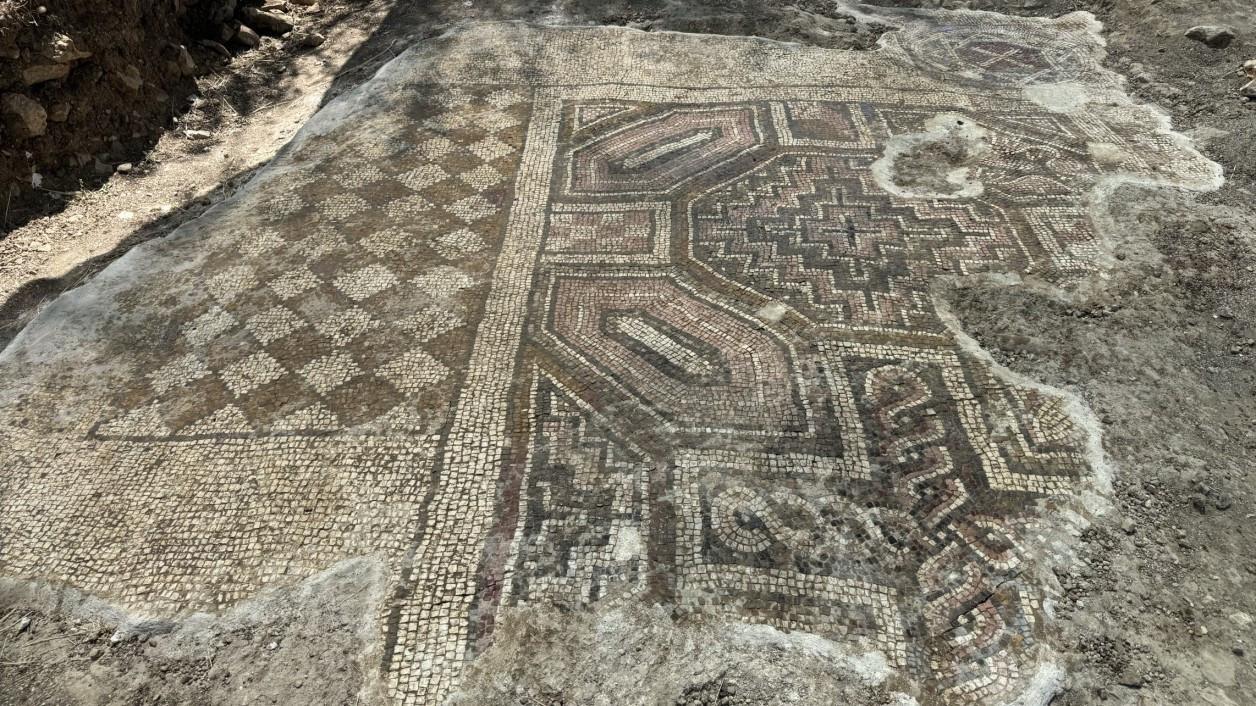
Villagers have unearthed remnants of a rare ornate mosaic during a grave excavation in Türkiye’s southeast.
The 35-square-meter floor, later identified as dating to the late Roman or early Byzantine period, features geometric patterns, a Star of David enclosing a cross motif and a six-line inscription written in Ancient Greek — believed to be a formal petition or dedication.
The discovery was made on March 8, when residents began digging a grave for a community member who had recently passed away in the Özbilek neighborhood of Diyarbakır’s Ergani district. Upon noticing mosaic fragments just beneath the surface, they halted the burial, notified the gendarmerie and reinterred the body at an alternate location.
“The initial examination confirmed that we were looking at something archaeologically significant,” said Mehmet Çelebi, deputy director of the Diyarbakır Museum. “Within days, we secured all necessary permits from the General Directorate of Cultural Heritage and Museums and the Regional Board for the Protection of Cultural Assets. A rescue excavation began on March 11.”
Over the next three weeks, a team of archaeologists, restorers, art historians and anthropologists worked on the site, eventually exposing the full extent of the mosaic. Experts believe the floor was part of a larger architectural structure, possibly a Roman-era villa or religious building.
What makes the mosaic particularly notable is the combination of symbols and languages — a Star of David enclosing a cross, and a six-line inscription in Ancient Greek. This rare juxtaposition has drawn interest from researchers studying the intersection of different faiths and cultures in the region during late antiquity.
“We suspect the mosaic was the floor of a significant building — possibly a wealthy home or a public structure,” Çelebi noted. “The inscription appears to be a formal petition or dedication, though full translation and interpretation are still ongoing.”
After documenting the site, the team opted for in situ preservation, rather than removing the mosaic. The area, located within the boundaries of the ancient city known as Memalan, was covered with geotextile material and protective sheeting to prevent damage. The mosaic now remains buried but protected until future excavations can further investigate the site.
In response to community concerns, local authorities and the Cultural Heritage Preservation Board issued new burial regulations. No further interments will be allowed near the archaeological site, and a new cemetery location will be designated in consultation with the villagers.
“This part of the village has long served as a burial ground, so naturally people were concerned. But we took measures to protect both the archaeological heritage and the needs of the local population. Until a new burial site is identified, all future graves will be situated away from the mosaic,” Çelebi said.
Officials say this unexpected find highlights the historical depth of the region and may lead to broader archaeological exploration of the ancient city of Memalan.